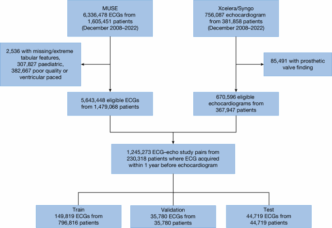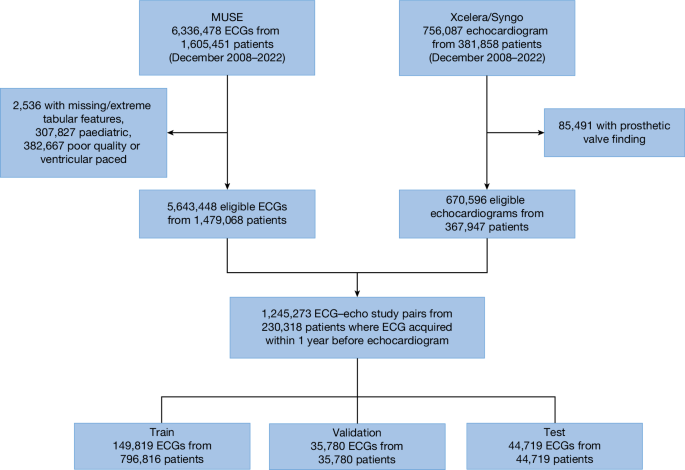EchoNext rolls out AI model to catch structural heart disease from ECGs
EchoNext, a new AI tool, predicts serious heart problems from standard 12-lead ECGs. It was trained on over 1.2 million ECG-echocardiogram pairs from 230,318 patients at eight NewYork-Presbyterian hospitals from 2008 to 2022. The model spots left ventricular dysfunction, valve disease, pulmonary hypertension, and more—using waveform data plus patient demographics.
The AI uses a convolutional neural network with multitask outputs to flag overall structural heart disease (SHD) and specific conditions like aortic stenosis and mitral regurgitation. It pulls detailed ECG features plus clinical labelling from echocardiograms as ground truth.
After training, EchoNext was tested on a fresh dataset from 2023, exclusive of training patients. It also followed up on an earlier AI, ValveNet, which predicted left-sided valve disease. ValveNet ran a 100-patient trial, recruiting those with moderate to high risk scores for confirmatory echocardiograms—catching silent disease before symptoms appear.
Thirteen cardiologists reviewed the AI’s work on 150 ECGs. They first read ECGs unaided, then with AI analysis added. This tested if the AI boosts human reading accuracy for subtle heart issues.
“Board-certified attending cardiologists were recruited…asked whether the patient was likely to have SHD (not likely or likely). After completion…were given the same ECGs with AI model analysis…”
The model’s diagnostic accuracy uses standard metrics like AUROC and was audited across multiple hospitals, race, sex, and age groups. It excludes paced ECGs and repaired valves to avoid mislabeling. Missing echocardiography details were imputed with logical defaults.
No patient consent was needed for this retrospective study, which followed Institutional Review Board approvals at Columbia and Weill Cornell. The research aims to integrate AI ECG screening into routine care, pinpointing heart disease risk years before severe symptoms or interventions.
The full study details and stats are in the Nature Portfolio Reporting Summary linked to the original paper.














